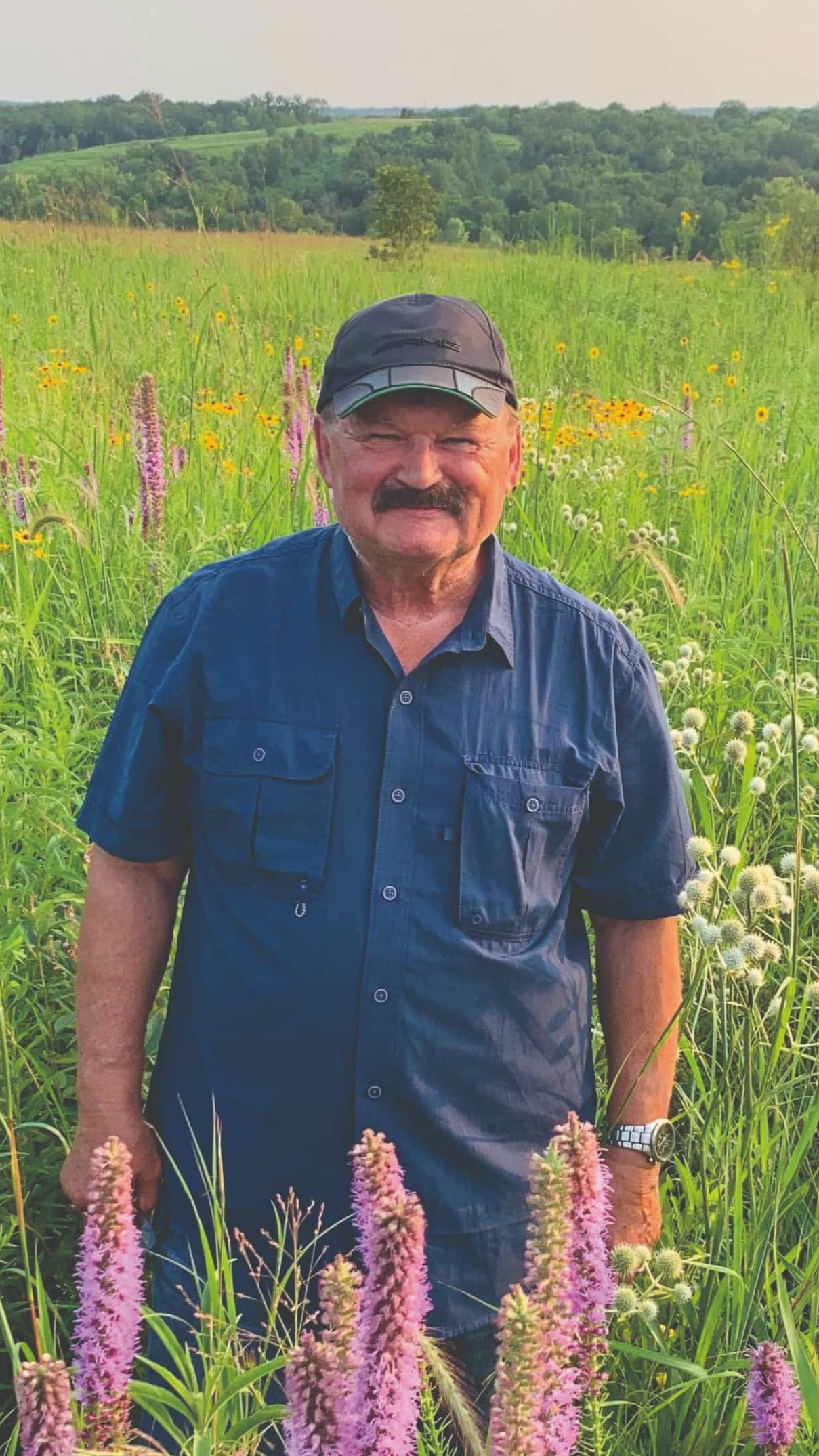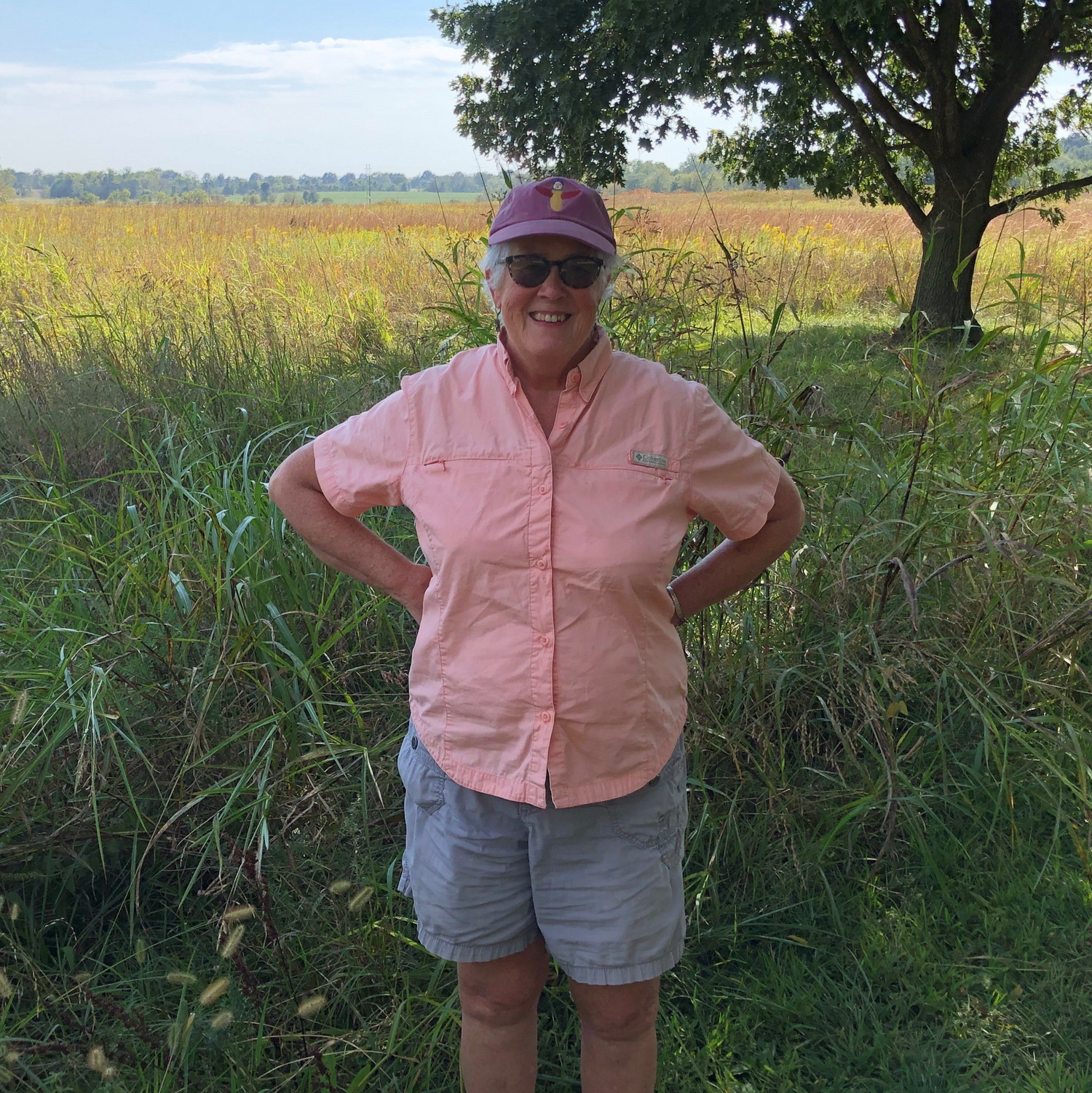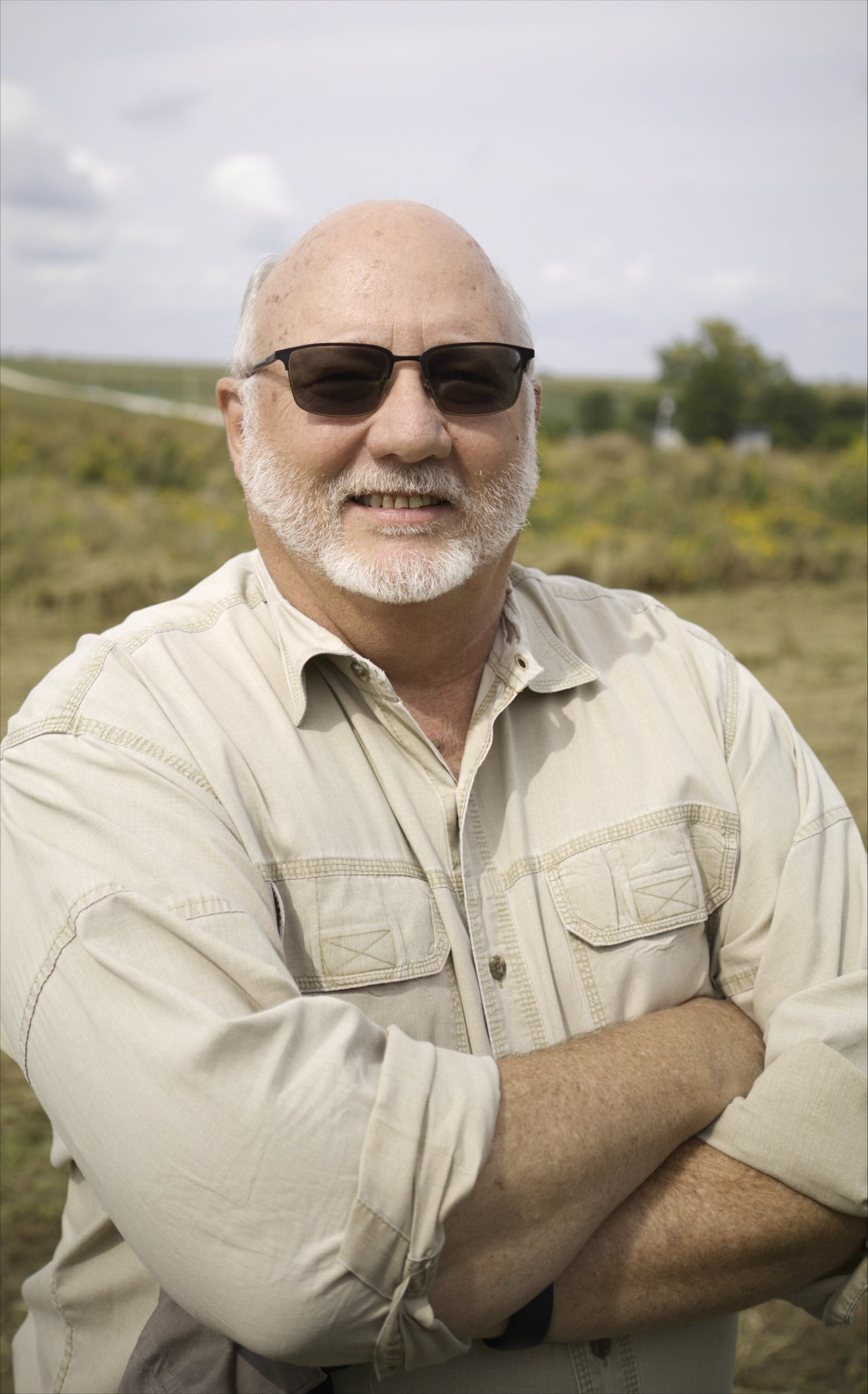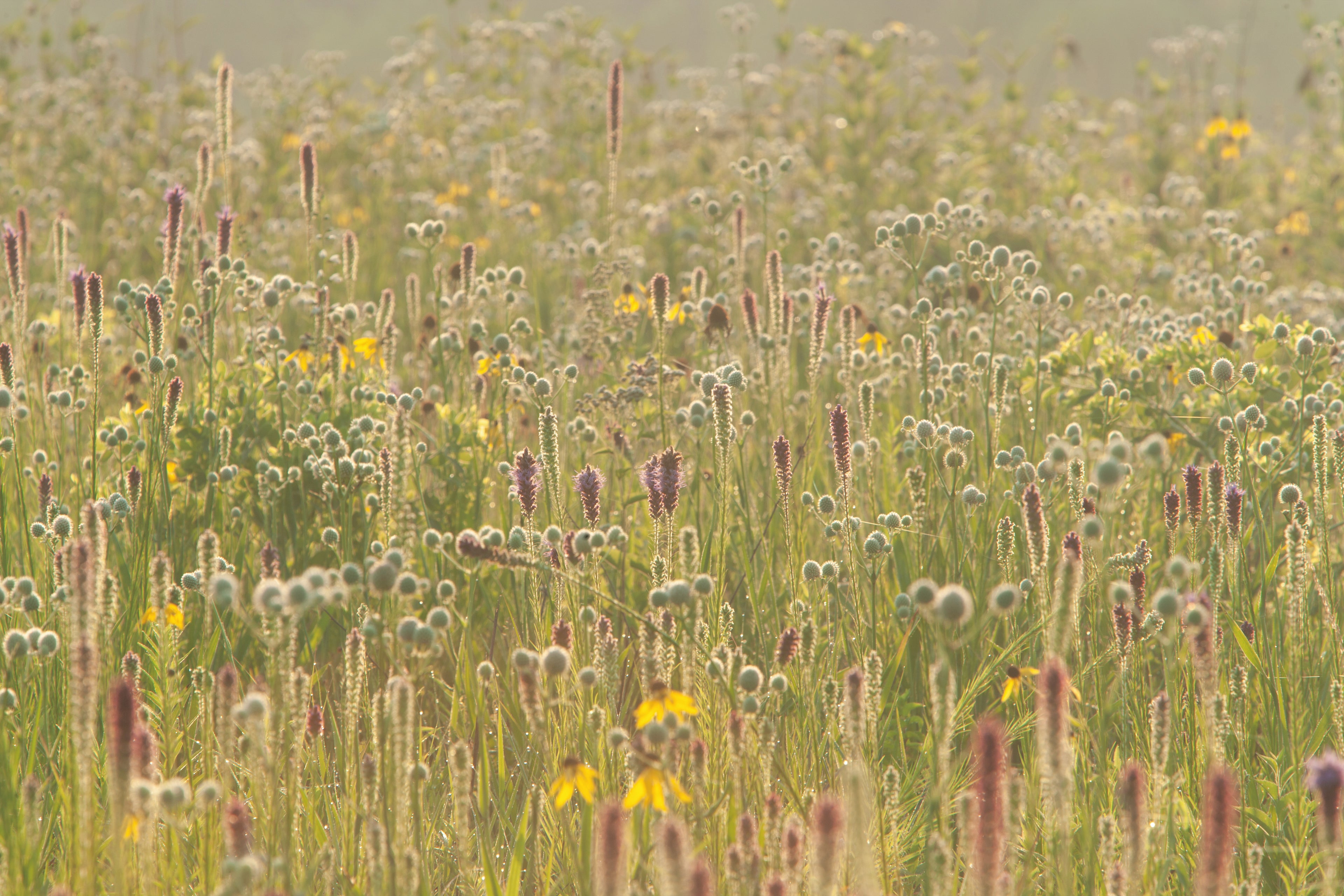
Prairie Power
How Prairies Can Heal the Planet
A new book written by Kathy Love, with a foreword by Rudi Roeslein, explores the power of prairies to generate energy, restore the environment, and put money in the hands of farmers.
look to the past, present, and future of America's tallgrass prairie
The hardy and lush landscapes inhabited by Native Americans has dwindled to remnants, preserved by those who honor the intrinsic, extraordinary value of native plants and animals. But a convergence of conservation and technology holds promise for the future.
Prairie Power traces the history of settlement and the transformation of the landscape. It describes the immense natural values of native plants and the animals who depend on them. It offers hope to rural communities and their residents who want to make a living from the land.
Prairies have the power to transform the landscape and the lives of those who call it home.
Renewable natural gas can be created through the anaerobic digestion of organic materials such as animal waste, cover crops, and prairie plants. The technology is widespread in much of Europe and is gaining traction in the US.
Roeslein Alternative Energy is capturing methane from hog farms in North Missouri and converting it to renewable natural gas. An $80 million grant from the USDA will help the company scale up operations. Farmers will be compensated for their native grasses and cover crops and receive carbon tax credits for the value of carbon dioxide removed from the atmosphere.
Prairie Power describes the neat trifecta that can be the future: energy production, wildlife habitat, and land restored to native plants that hold the soil and maintain clean water. Lavishly illustrated with photos from some of the Midwest's top photographers, Prairie Power, How Prairies Can Heal the Planet, will help readers understand how prairies work and how to join with others to transform the American landscape.
about the contributors
[There's a whole team behind this project, here are a few of them].

The Founder
rudi roeslein
Rudi Roeslein immigrated to the United States from Austria with his parents in 1956. His family settled in St. Louis, where he and his wife Judy raised three children and are now enjoying the blessing of eight grandchildren. He attended St. Louis University, graduating in 1971 with a degree in Electrical Engineering. As a student-athlete, Rudi was a 1967 NCAA Division 1 championship soccer team member. He still credits much of his business success to the comradery and cooperation he learned from athletic competition.
Rudi’s career began in the engineering department at Container Corporation of America. Here, he first saw the potential of modular concepts. During this time he rose to the rank of executive vice president and began developing many of his modular concepts. He founded Roeslein & Associates (R&A) in 1990. Over the last 30 years, R&A has grown into a major international company, with operations in the United States, China, Poland, Brazil, and the United Kingdom. R&A has designed, built, and shipped entire modular preassembled beverage can manufacturing systems from the United States to over 60 countries on six continents. R&A is a global engineering, modular fabrication, and construction company with over 1,000 workers.
In 2012, led by his true passion for wildlife and landscape habitat restoration, Rudi founded Roeslein Alternative Energy (RAE), an operator and developer of renewable energy production facilities that convert agricultural and industrial wastes, along with renewable biomass feedstocks to renewable natural gas (RNG) and sustainable co-products.
Rudi suggests his success comes from following his company’s simple but powerful ethos: Be Happy, Remain Humble, Stay Hungry.

The Author
Kathy Love
Kathy Love grew up near the prairies around Joplin, Mo. She attended Reed College in Portland, OR, and then graduated with a degree in Interdisciplinary Humanities from the University of Missouri-Columbia. She and her husband, Don, built a house from the white oaks harvested from their 40 acres in Shannon County before joining the Missouri Department of Conservation as a book editor. She became the division administrator, overseeing publications, news, media, education, and nature centers. She has edited nine books and written three, including her latest, Prairie Power, How Prairies Can Heal the Planet (2024).

Attorney / conservationist
Steve Mowry
Steve Mowry's roots run five generations deep in Missouri. He was born in Nevada, Vernon County, Missouri, and grew up hunting ducks in the Marmaton River bottoms and working in his parents’ greenhouse and florist business.
He graduated from the University of Missouri School of Law in 1983 and, as of 2024, has been a lawyer for 41 years, both in private practice and simultaneously prosecuting for Clay County.
He is a past president of the Missouri Prairie Foundation and twice served as president of the Missouri Conservation Heritage Foundation.
In 2024, Steve became the Director of Prairie Establishment for Roeslein Alternative Energy, a key team member devoted to establishing up to 40,000 acres of new prairie in the Grand River basin in north Missouri and southern Iowa.
He and his wife, Ann, have worked for nearly 30 years improving the habitat for all wildlife on an expansive farm in Adair County, Missouri, where his daughters, sons-in-law, and six grandchildren are deeply engaged in restoring its native landscapes.
Rudi Roeslein's 30 by 30 vision Planting and restoring thirty million acres of native grasses within thirty years will have a three-fold impact that will help bring new prosperity to rural areas. When combined with the methane wastes produced by animals in the same areas, prairie vegetation can:
-
RENEWABLEENERGY
Enhance the production of renewable natural gas.
-
ECOLOGICALSERVICES
Provide ecological services worth billions of dollars.
-
WILDLIFEHABITAT
Create wildlife habitat for pollinators, animals, plants, and rare species.
Praise for Prairie Power
-
“American prairie evokes our national spirit: expansive, exhilarating in its abundance, full of life and promise. Today our native grassland legacy has been dramatically reduced to scattered remnants of its once vast 160-million-acre domain across North America. However, protected remnants provide genetic resources and native plant community templates for bold projects like Roeslein Alternative Energy's Horizon II—a holistic, ecological approach to energy production, wildlife habitat establishment, water quality protection, and carbon storage."
— Carol Davit, Executive Director, Missouri Prairie Foundation
-
“Rudi Roeslein looks at prairies with the brain of an engineer and the heart of a poet. His vision for bringing together the beauty and diversity of our historic natural landscape with the economic value of a complex technical project ensures that Missouri prairies will become more relevant than ever before—the glorious past becoming part of a hopeful future.”
— Dan Burkhardt, Founder, Magnificent Missouri
-
“Rudi Roeslein has worked at the intersection of farming and nature for decades, developing a practical model of sustainability for rural communities by integrating agriculture with alternative energy production and restored prairies. The result is a roadmap for a sustainable rural America, with cleaner water, better soil, and more wildlife.”
- Henry M. Paulson Jr., 74th Treasury Secretary, Chairman, Paulson Institute

Available online or in-store
Prairie Power is available at Missouri Life Mercantile, 208 Columbia St., Rocheport, MO 65279. 573-514-5453. Physical copies as well as eBooks and Audio Books available online.